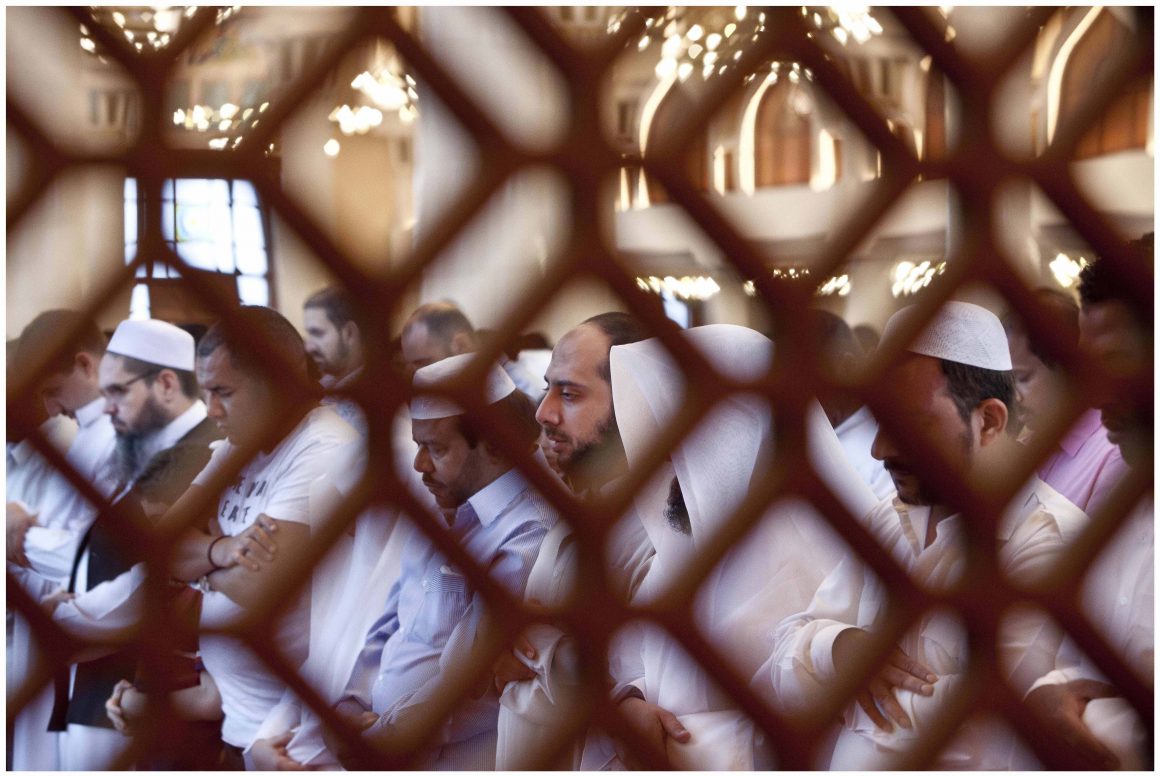Doha News sheds light on some of the unique traditions upheld by a number of communities in the region.
Eid Al Adha, literally translated to the ‘Festival of Sacrifice’, is a significant religious event marked by Muslims worldwide and takes life in slightly different ways across communities on various continents.
As per traditions set by the Prophet Muhammad, Eid Al Adha begins with early morning prayers, in which Muslims gather in a large space to take part in congregational prayers – reflecting scenes from Mecca where pilgrims gather in prayer around the Kaaba.
Here is a list of how Muslims communities across the world celebrate Eid according to their customs and traditions.
Qatar
Some of the traditions observed during this Islamic event include families attending Eid prayers just after the crack of dawn, with men dressed in fresh set of tradition clothes, the ‘thawb’. A breakfast feast then takes place after the Eid prayer, gathering all the members of the family.
They then visit elderly members of the family in their houses before gathering for lunch. The ‘dhabiha’ (ذبيحة), a traditional dish which simply means ‘the Halal slaughter’, is usually served on the lunch table in Qatari households.
Morocco
In Morocco, Eid Al Adha, locally known as “Aid Al Kabir,” is marked an array of cultural festivities. Families gather for morning prayers at mosques, donning their newest attire.
The highlight of the celebrations is the sacrificial ritual, where livestock such as sheep or cows are sacrificed in remembrance of Prophet Ibrahim’s sacrifice. The meat is then distributed among family, friends and those less fortunate.
The subsequent days of the festival are marked by the indulgence in meat-centred dishes such as mechoui (a whole lamb roasted in a pit in the ground), steamed sheep’s head, and mrouzia (a sweet and spicy Moroccan tagine).
These dishes, characterised by their abundant use of various animal parts, including the head, tail, intestines, stomach, and hooves, exemplify the Moroccan practice of utilising every part of the animal. Even the brain, fat, and testicles are used in the food-making process, ensuring minimal waste in the culinary traditions associated with Eid Al Adha.
Iran
In Iran, Eid Al Adha, locally known as “Eid-e-Qurban,” is marked with festivities that begin with morning prayers at mosques.
In Tehran Iranians participate in the collective Eid prayers held at Tehran University, led by Ayatollah Ali Khamenei, Iran’s Supreme Leader. Every year on this day, Ayatollah Khamenei delivers a speech addressing current events and highlighting the importance of Muslim unity.
Eid Al Adha, also referred to as the ‘salty Eid’ for its savory culinary offerings, features a diverse range of dishes made primarily from beef or mutton, depending on the animal sacrificed. The meat is commonly used in the preparation of kebabs and haleem, a hearty stew made with wheat or barley and meat.
Turkey
Turkey, a country with a rich Islamic heritage, embraces Eid Al Adha by coming together as a family for prayers at mosques, followed by visits to the graves of their loved ones.
Families then participate in the sacrificial slaughter of Eid Al Adha. The meat of the slaughtered animal is shared with relatives and neighbours, and special dishes like pilav (rice cooked in stock or broth, with spices) are prepared to mark the occasion.
Pakistan
In Pakistan, Eid Al Adha, locally referred to as “Bakra Eid,” begins with congregational prayers at mosques.
Livestock markets thrive as families select their sacrificial animals during the festival. Festive meals, including dishes like biryani and seekh kebabs typically decorate the Eid tables of South Asian households.
